A Ring Artifact Correction Method: Validation by Micro-CT Imaging with Flat-Panel Detectors and a 2D Photon-Counting Detector
Abstract
:1. Introduction
2. Materials and Methods
2.1. Defective Pixel Correction
2.2. Mis-Calibrated Pixel Correction
2.3. Contrast Compensation
2.4. Micro-CT Imaging Experiments
3. Results
4. Discussion
5. Conclusions
Acknowledgments
Author Contributions
Conflicts of Interest
Abbreviations
| CT | Computed tomography |
| FPD | Flat-panel detector |
| PCXD | Photon-counting X-ray detector |
| Si | Silicon |
| CdTe | Cadmium telluride |
| ROI | Region of interest |
| MTF | Modulation transfer function |
References
- Lee, S.C.; Kim, H.K.; Chun, I.K.; Cho, M.H.; Lee, S.Y.; Cho, M.H. A flat-panel detector based micro-CT system: Performance evaluation for small-animal imaging. Phys. Med. Biol. 2003, 48, 4173–4185. [Google Scholar] [CrossRef] [PubMed]
- Zuber, M.; Hamann, E.; Ballabriga, R.; Campbell, M.; Fiederle, M.; Baumbach, T.; Koenig, T. An investigation into the temporal stability of CdTe-based photon counting detectors during spectral micro-CT acquisitions. Biomed. Phys. Eng. Express. 2015, 1, 025205. [Google Scholar] [CrossRef]
- Seibert, J.A.; Boone, J.M.; Lindfors, K. Flat-field correction technique for digital detectors. Proc. SPIE 1998, 3336, 348–354. [Google Scholar]
- Kim, J.; Park, S.; Hegazy, M.; Lee, S. Comparison of a photon-counting-detector and a CMOS flat-panel-detector for a micro-CT. In Proceedings of the 2013 IEEE Nuclear Science Symposium and Medical Imaging Conference (NSS/MIC), Seoul, Korea, 27 October–2 November 2013; pp. 1–5.
- Shikhaliev, P.M.; Fritz, S.G. Photon counting spectral CT versus conventional CT: Comparative evaluation for breast imaging application. Phys. Med. Biol. 2011, 56, 1905–1930. [Google Scholar] [CrossRef] [PubMed]
- He, P.; Wei, B.; Cong, W.; Wang, G. Optimization of K-edge imaging with spectral CT. Med. Phys. 2012, 39, 6572. [Google Scholar] [CrossRef] [PubMed]
- Anderson, N.G.; Butler, A.P.; Scott, N.J.A.; Cook, N.J.; Butzer, J.S.; Schleich, N.; Firsching, M.; Grasset, R.; de Ruiter, N.; Campbell, M.; et al. Spectroscopic (multi-energy) CT distinguishes iodine and barium contrast material in MICE. Eur. Radiol. 2010, 20, 2126–2134. [Google Scholar] [CrossRef] [PubMed]
- Koenig, T.; Schulze, J.; Zuber, M.; Rink, K.; Butzer, J.; Hamann, E.; Cecilia, A.; Zwerger, A.; Fauler, A.; Fiederle, M.; et al. Imaging properties of small-pixel spectroscopic X-ray detectors based on cadmium telluride sensors. Phys. Med. Biol. 2012, 57, 6743–6759. [Google Scholar] [CrossRef] [PubMed]
- Koenig, T.; Zuber, M.; Hamann, E.; Cecilia, A.; Ballabriga, R.; Campbell, M.; Ruat, M.; Tlustos, L.; Fauler, A.; Fiederle, M.; et al. How spectroscopic X-ray imaging benefits from inter-pixel communication. Phys. Med. Biol. 2014, 59, 6195–6213. [Google Scholar] [CrossRef] [PubMed]
- Koenig, T.; Hamann, E.; Procz, S.; Ballabriga, R.; Cecilia, A.; Zuber, M.; Llopart, X.; Campbell, M.; Fauler, A.; Baumbach, T.; et al. Charge summing in spectroscopic X-ray detectors with high-Z sensors. IEEE Trans. Nucl. Sci. 2013, 60, 4713–4718. [Google Scholar] [CrossRef]
- Taguchi, K.; Frey, E.C.; Wang, X.; Iwanczyk, J.S.; Barber, W.C. An analytical model of the effects of pulse pileup on the energy spectrum recorded by energy resolved photon counting X-ray detectors. Med. Phys. 2010, 37, 3957–3969. [Google Scholar] [CrossRef] [PubMed]
- Schlomka, J.P.; Roessl, E.; Dorscheid, R.; Dill, S.; Martens, G.; Istel, T.; Bäumer, C.; Herrmann, C.; Steadman, R.; Zeitler, G.; et al. Experimental feasibility of multi-energy photon-counting K-edge imaging in pre-clinical computed tomography. Phys. Med. Biol. 2008, 53, 4031–4047. [Google Scholar] [CrossRef] [PubMed]
- Iwanczyk, J.S.; Nygård, E.; Meirav, O.; Arenson, J.; Barber, W.C.; Neal, E.; Malakhov, N.; Wessel, J.C. Photon counting energy dispersive detector arrays for X-ray imaging. IEEE Trans. Nucl. Sci. 2009, 56, 535–542. [Google Scholar] [CrossRef] [PubMed]
- Münch, B.; Trtik, P.; Marone, F.; Stampanoni, M. Stripe and ring artifact removal with combined wavelet-Fourier filtering. EMPA Act. 2009, 17, 34–35. [Google Scholar] [CrossRef]
- Boin, M.; Haibel, A. Compensation of ring artefacts in synchrotron tomographic images. Opt. Express 2006, 14, 12071–12075. [Google Scholar] [CrossRef] [PubMed]
- Ketcham, R.A. New algorithms for ring artifact removal. Proc. SPIE 2006, 6318. [Google Scholar] [CrossRef]
- Sadi, F.; Lee, S.Y.; Hasan, M.K. Removal of ring artifacts in computed tomographic imaging using iterative center weighted median filter. Comput. Biol. Med. 2010, 40, 109–118. [Google Scholar] [CrossRef] [PubMed]
- Hasan, M.K.; Sadi, F.; Lee, S.Y. Removal of ring artifacts in micro-CT imaging using iterative morphological filters. Signal Image Video Process. 2012, 6, 41–53. [Google Scholar] [CrossRef]
- Abu Anas, E.M.; Lee, S.Y.; Hasan, M.K. Removal of ring artifacts in CT imaging through detection and correction of stripes in the sinogram. Phys. Med. Biol. 2010, 55, 6911–6930. [Google Scholar] [CrossRef] [PubMed]
- Sijbers, J.; Postnov, A. Reduction of ring artefacts in high resolution micro-CT reconstructions. Phys. Med. Biol. 2004, 49, N247–N253. [Google Scholar] [CrossRef] [PubMed]
- Prell, D.; Kyriakou, Y.; Kalender, W.A. Comparison of ring artifact correction methods for flat-detector CT. Phys. Med. Biol. 2009, 54, 3881–3895. [Google Scholar] [CrossRef] [PubMed]
- Kyriakou, Y.; Prell, D.; Kalender, W.A. Ring artifact correction for high-resolution micro CT. Phys. Med. Biol. 2009, 54, N385–N391. [Google Scholar] [CrossRef] [PubMed]
- Tang, X.; Ning, R.; Yu, R.; Conover, D. Cone beam volume CT image artifacts caused by defective cells in X-ray flat panel imagers and the artifact removal using a wavelet-analysis-based algorithm. Med. Phys. 2001, 28, 812–825. [Google Scholar] [CrossRef] [PubMed]
- Anas, E.M.A.; Kim, J.G.; Lee, S.Y.; Hasan, M.K. High-quality 3D correction of ring and radiant artifacts in flat panel detector-based cone beam volume CT imaging. Phys. Med. Biol. 2011, 56, 6495–6519. [Google Scholar] [CrossRef] [PubMed]
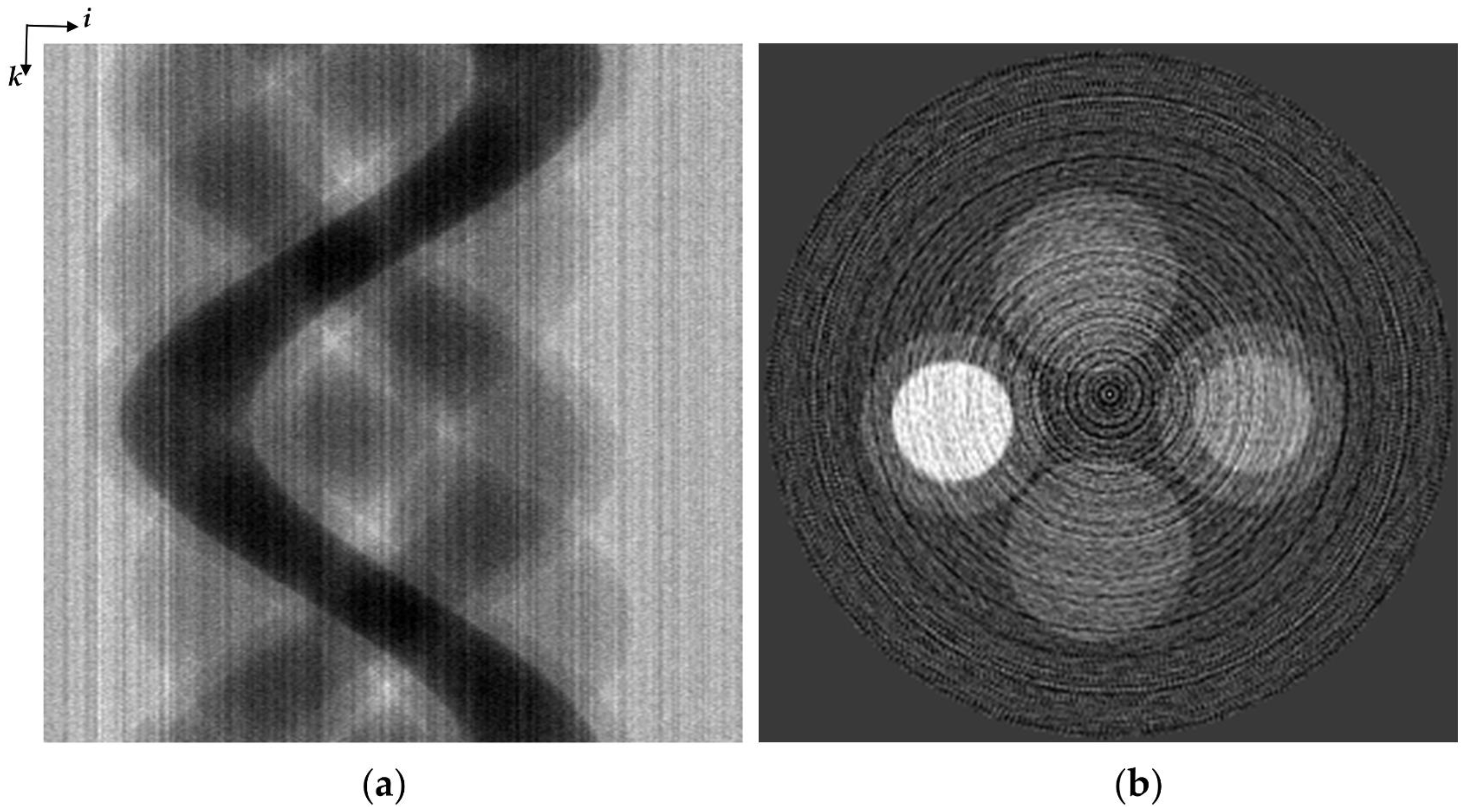
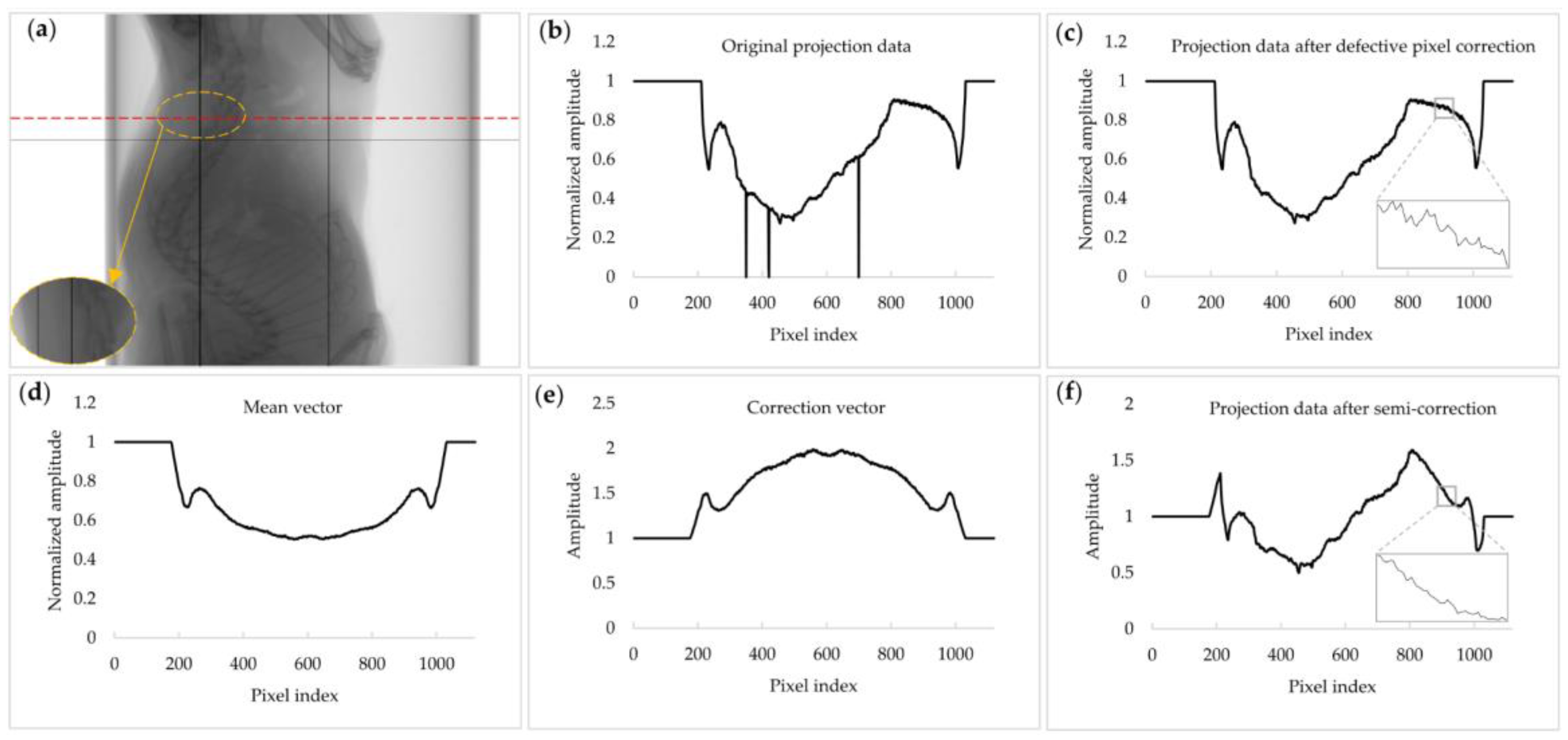
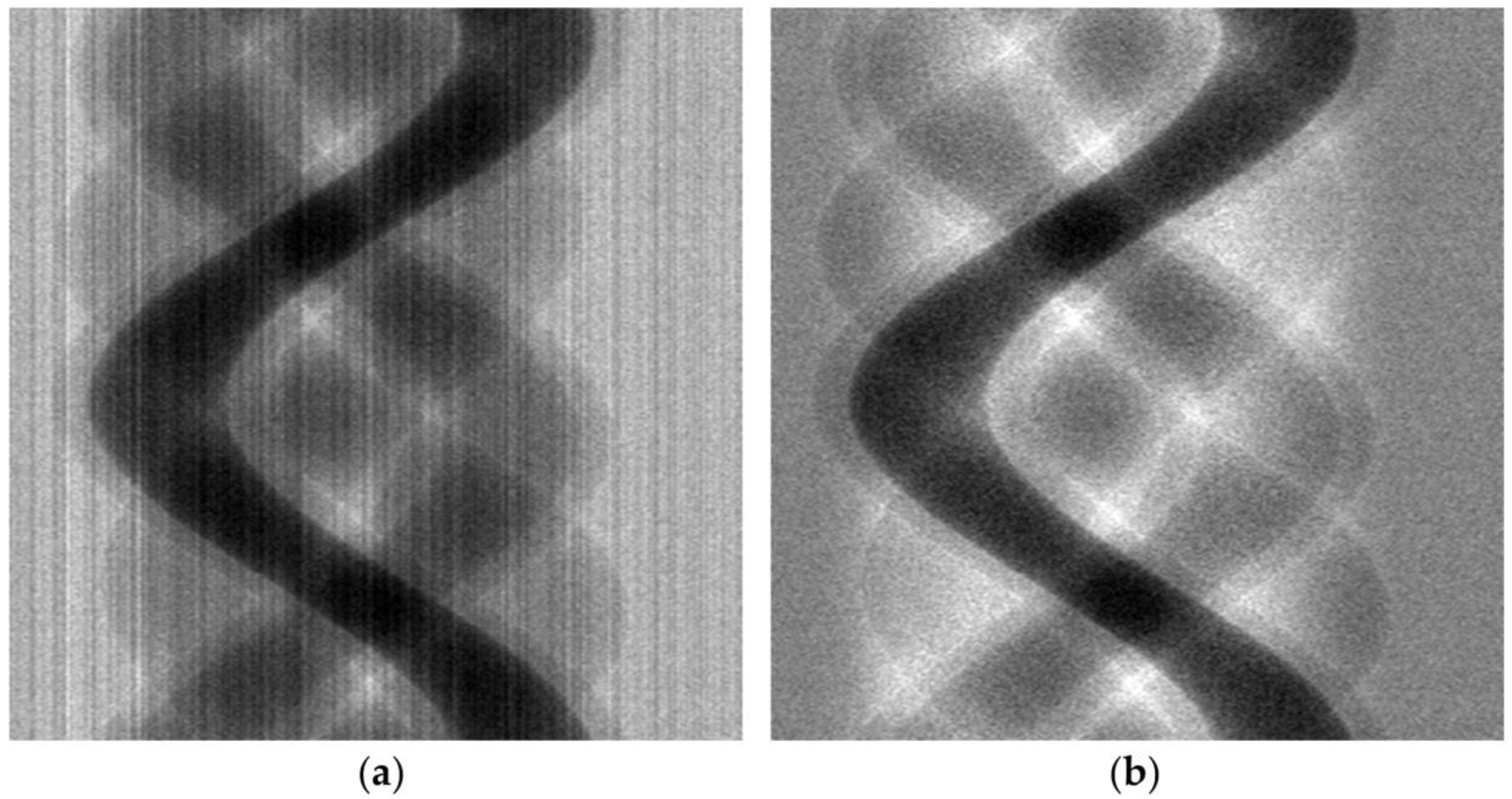
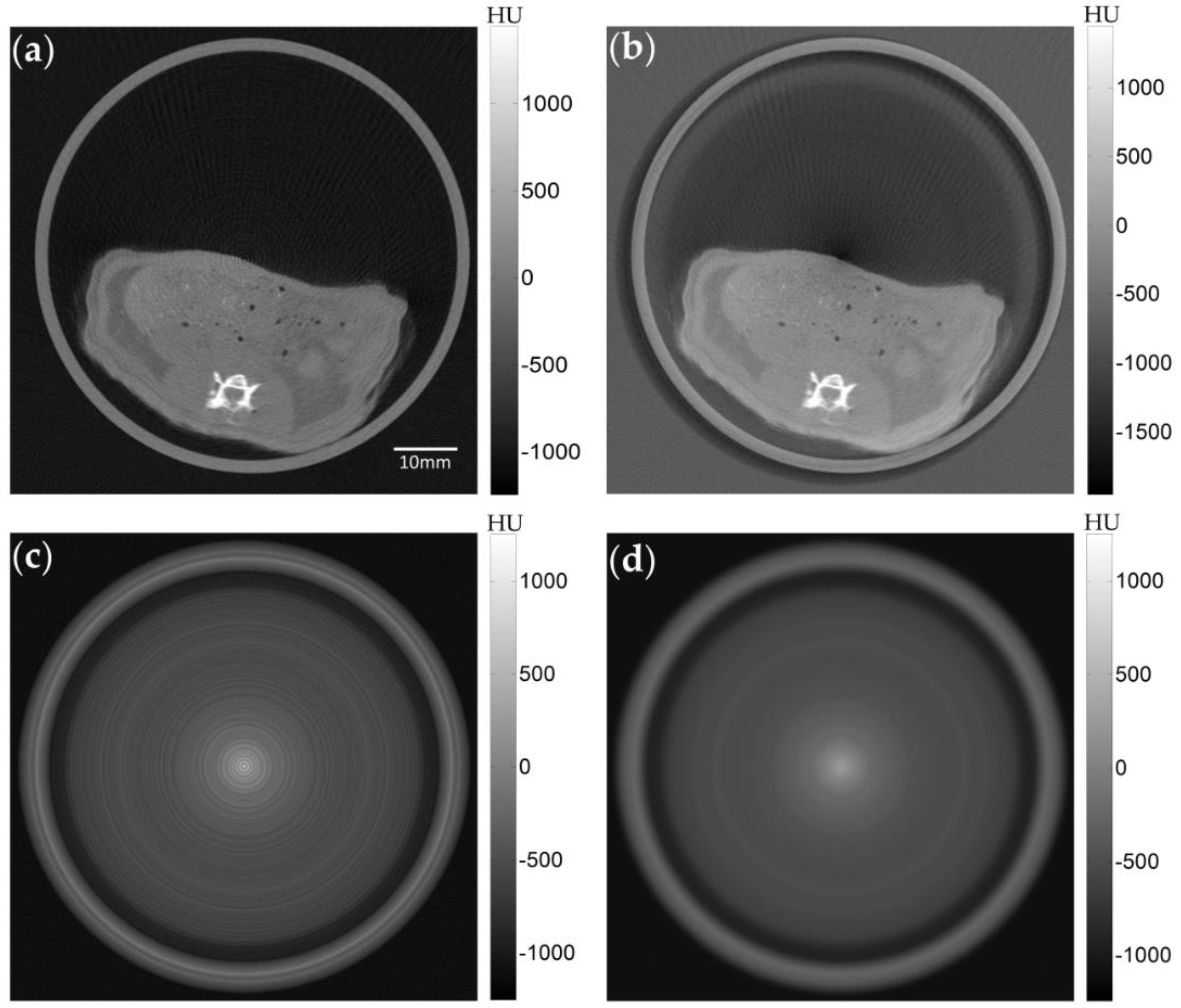

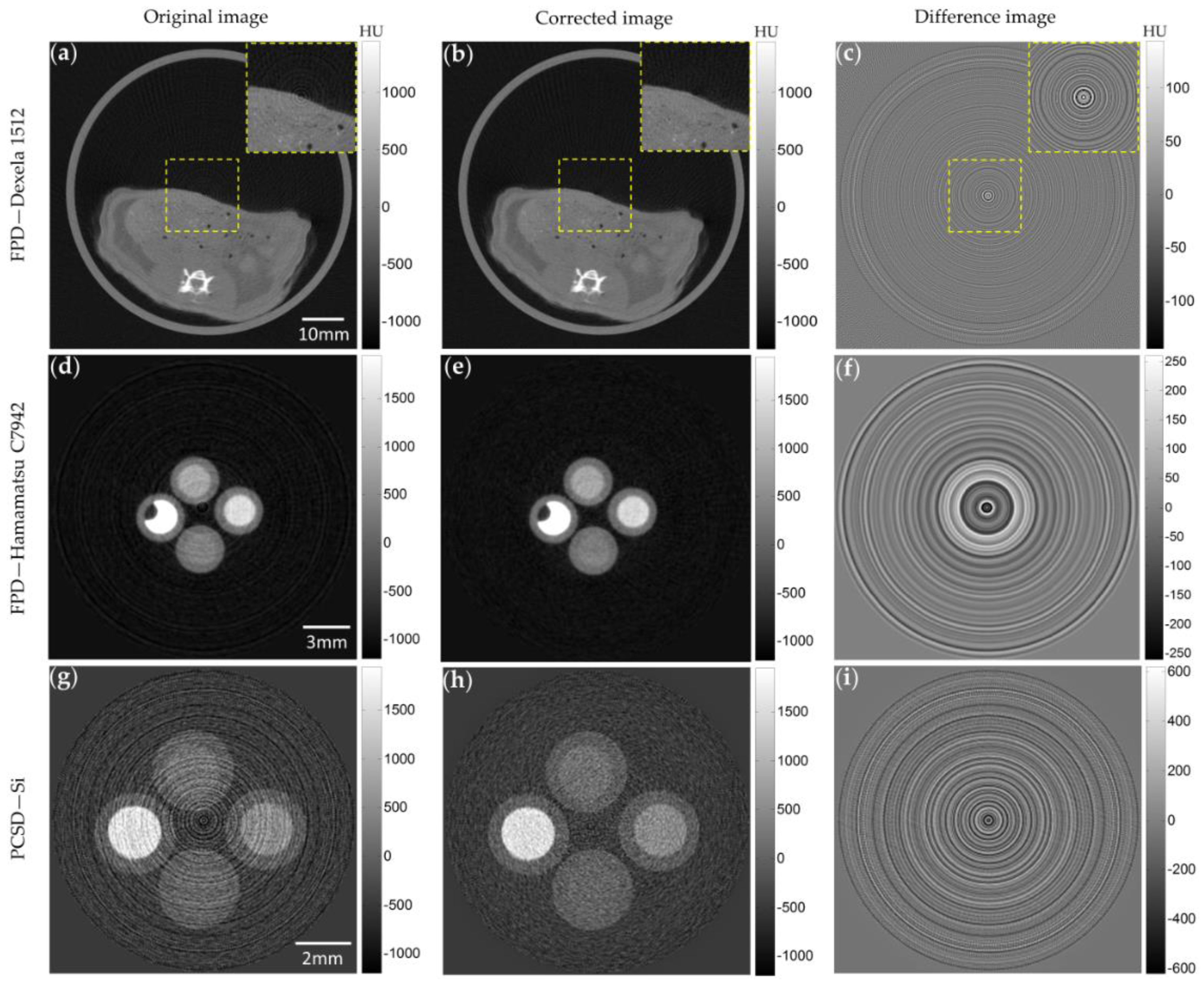
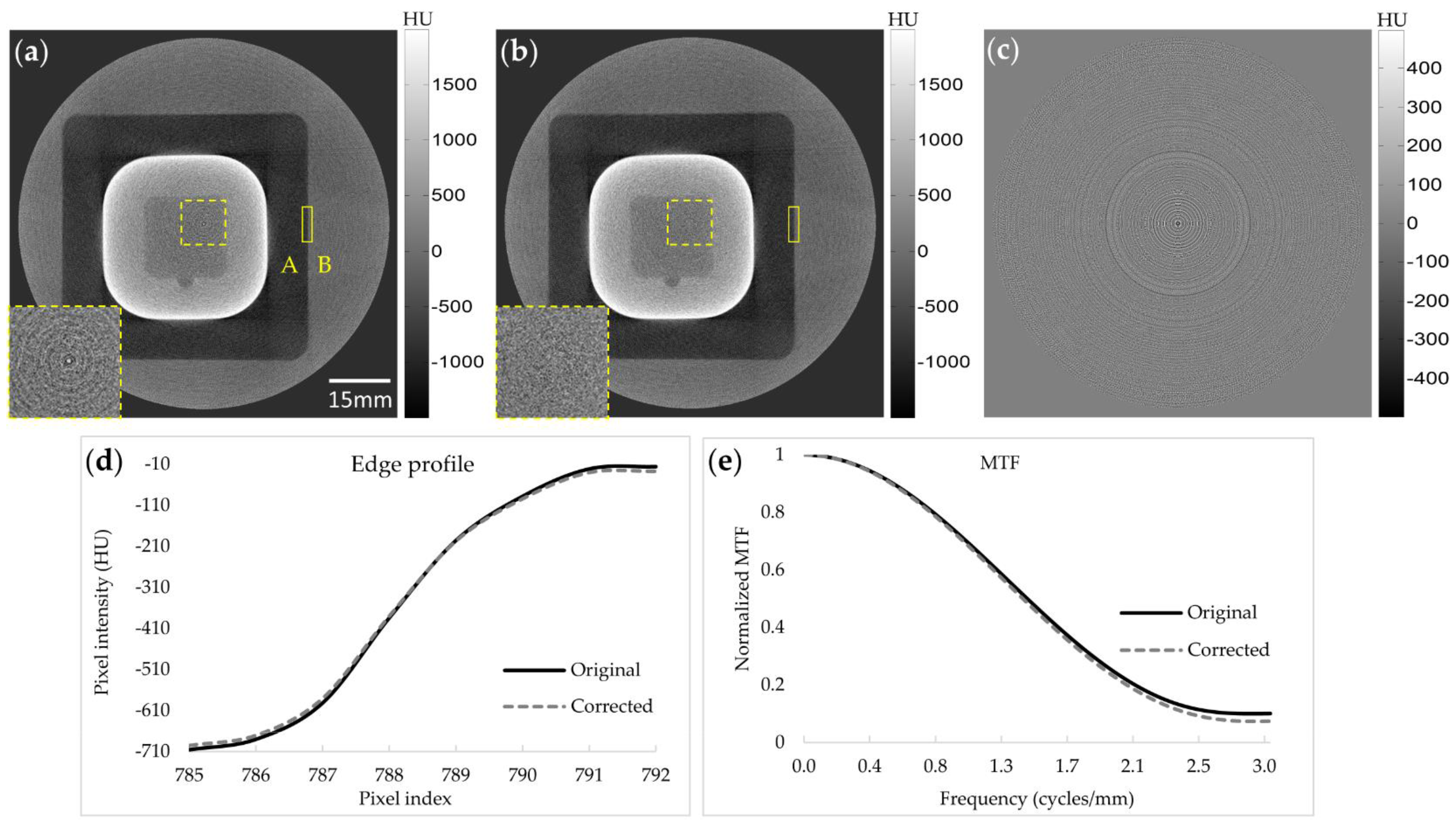
| SNR(dB) | CNR(dB) | |
|---|---|---|
| Original image | −10.4 | 8.3 |
| Corrected image | −9.3 | 9.1 |
© 2017 by the authors. Licensee MDPI, Basel, Switzerland. This article is an open access article distributed under the terms and conditions of the Creative Commons Attribution (CC BY) license ( http://creativecommons.org/licenses/by/4.0/).
Share and Cite
Eldib, M.E.; Hegazy, M.; Mun, Y.J.; Cho, M.H.; Cho, M.H.; Lee, S.Y. A Ring Artifact Correction Method: Validation by Micro-CT Imaging with Flat-Panel Detectors and a 2D Photon-Counting Detector. Sensors 2017, 17, 269. https://doi.org/10.3390/s17020269
Eldib ME, Hegazy M, Mun YJ, Cho MH, Cho MH, Lee SY. A Ring Artifact Correction Method: Validation by Micro-CT Imaging with Flat-Panel Detectors and a 2D Photon-Counting Detector. Sensors. 2017; 17(2):269. https://doi.org/10.3390/s17020269
Chicago/Turabian StyleEldib, Mohamed Elsayed, Mohamed Hegazy, Yang Ji Mun, Myung Hye Cho, Min Hyoung Cho, and Soo Yeol Lee. 2017. "A Ring Artifact Correction Method: Validation by Micro-CT Imaging with Flat-Panel Detectors and a 2D Photon-Counting Detector" Sensors 17, no. 2: 269. https://doi.org/10.3390/s17020269





